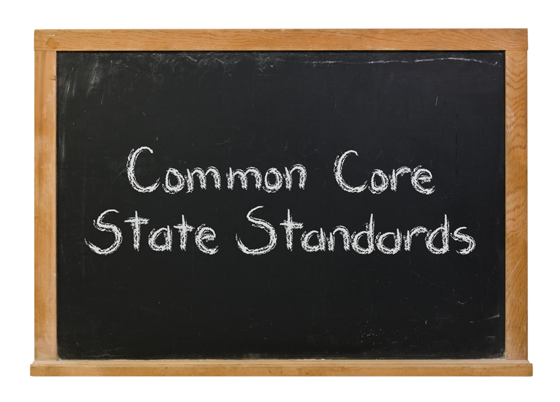
Making Oral Communication a Successful Part of the Common Core
Adoption of the Common Core State Standards (CCSS) represents the first time that oral communication has been included in the curriculum requirements for K–12 education in many states. If done well, this change will provide important benefits to our students. However, effective implementation will require collaboration among policymakers, educators, and experts in oral communication.
As educators work to strengthen primary and secondary education in the United States, many agree that schools need educational standards that are grounded in today’s needs and shared across states. The CCSS have emerged as a potential solution, and the majority of states have adopted these standards. The addition of oral communication to the primary and secondary curriculum is significant, as bountiful evidence points to oral communication as one of the most important domains of knowledge and skill students can master. Surveys of employers by organizations such as the National Association of College and Employers, surveys of corporate leaders by academic researchers, research on technical and engineering jobs funded by the National Science Foundation, prevalent advice by employment experts, and vast amounts of other evidence consistently place strength in oral communication among the most sought-after attributes in new hires.
The CCSS focus on two major areas of communication knowledge and skill: 1) comprehension and collaboration, and 2) presentation of knowledge and ideas. The former helps students learn how to work with others in discussion and team settings. Comprehension and collaboration includes being prepared for discussion, interacting with civility, setting goals and deadlines in conversation, asking good questions and answering effectively, integrating and responding thoughtfully to diverse ideas, evaluating oral arguments, and developing other related skills. The latter content area focuses on quality of oral presentations. Presentation of knowledge and ideas includes structuring information for best comprehension, having effective delivery style, making strategic use of presentational aids, adapting to different audiences and contexts, and more.
While the inclusion of oral communication has the promise to be a great leap forward in students’ education, the challenge is to do it well. Several hurdles must be overcome to capitalize on the potential of this new addition. First, new curriculum must be developed. Because oral communication has never been part of the K–12 curriculum, educators do not have a model for best practices or widespread experience upon which to draw. One thing we know is that oral communication is not just “spoken writing.” It requires instructional methods and content that are different from written composition.
Because oral communication is situated in the CCSS’s English Language Arts component, its instruction most likely will fall to those who teach English literature and composition. These faculty will need additional training for their new responsibilities. A common myth is that because everyone communicates daily, anyone can teach oral communication. Unfortunately, it takes only a cursory observation to see that not everyone communicates effectively, and few are highly accomplished. If everyone did it well, we would not need to add it to the curriculum.
Many instructors have not had the opportunity to gain expertise in the communication concepts and theories needed to teach oral communication. Popular media are not much help. Some of the communication knowledge offered by the media is incomplete, inaccurate, or completely misleading. For example, the often-repeated statistic that communication is 55 percent facial expression, 38 percent vocal cues, and 7 percent verbal is a misreporting of actual research. (In truth, the source of meaning varies dramatically, depending upon what type of information is being communicated.) And, when it comes to civil dialogue, the media are notoriously thin on good examples to model. Much of the interaction we see on reality TV, talk shows, and elsewhere models failure of dialogue.
The Communication discipline offers a wide array of research and teaching expertise to support rich and meaningful pedagogy for all levels of the CCSS. Communication scholars have produced extensive bodies of research on many topics encompassed in the CCSS: engaging in civil dialogue, effective listening and questioning, role behavior in groups, analysis of and adaptation to different audiences and contexts, developing a persuasive case, doing critical analysis of arguments and claims, effective structural elements in presentations, use of presentational aids, and more.
To most effectively implement oral communication into the K–12 curriculum, policymakers and practitioners need to work with experts in oral communication. Unfortunately, these communication scholars typically have not been well connected with primary and secondary education. Some experts, like Dr. Sara Weintraub at Regis College and Dr. Sherry Morreale at the University of Colorado Colorado Springs, have been working with the National Communication Association and educational organizations to develop materials to assist educators in implementing CCSS requirements. However, many more connections need to be made. State education departments and local school systems can consult with oral communication experts at local colleges and universities to collaborate in developing curriculum and assessment of student learning. Such collaboration needs to include new research looking specifically at the CCSS curriculum. While the Communication discipline offers a wealth of expertise on teaching oral communication, most research has been done on college students. Careful investigation is necessary to discern what content and teaching methods will work best for students across different levels of cognitive and emotional development.
Educators charged with implementing the CCSS have some challenges to make the oral communication component a valuable addition to students’ learning. If policymakers and teachers connect their needs with Communication scholars’ expertise, and if these parties develop and test curriculum together, this new element has great potential to have a significant and positive impact. Appropriately, what is needed right now to make that happen is...communication.

